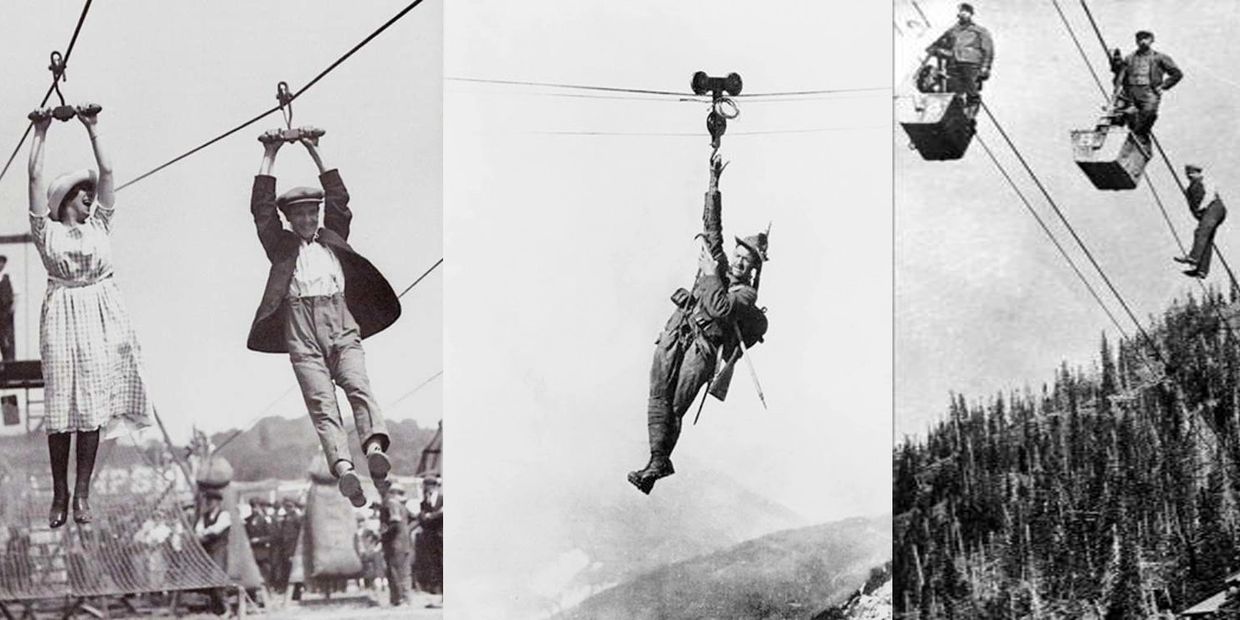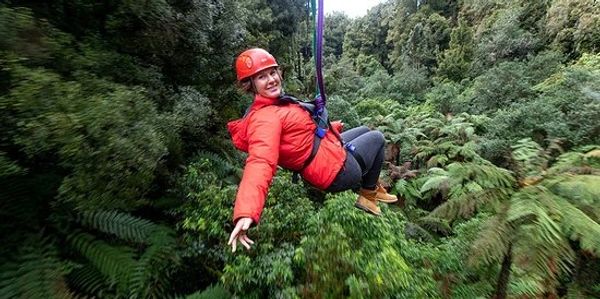The History of Zip Line, Nowdays Backyard Ziplines Become Popular in USA So Kids & Parents Can Get Endless Fun & Backyard Adventure

The History of Zip Lines: From Utility to Adventure
Zip lines, once a simple tool for transportation, have evolved into a thrilling recreational activity enjoyed by millions worldwide. Their journey from practical utility to adventure tourism is a fascinating tale of innovation and human ingenuity.
Early Beginnings: Utility in Remote Areas
The origins of zip lines can be traced back to ancient times when they were used primarily for practical purposes. In remote and rugged terrains, such as mountainous regions and dense forests, zip lines served as an efficient means of transporting goods and people across otherwise impassable gaps.
Himalayas and Alps: In these mountainous regions, zip lines were used to transport supplies and people across deep ravines and rivers. They were essential for communities living in isolated areas.
Rainforests: In the dense rainforests of South America and Southeast Asia, indigenous peoples used rudimentary zip lines to move goods and communicate between villages separated by thick jungle.
19th and Early 20th Century: Industrial Use
As industrialization progressed, zip lines found new applications in various industries. They were particularly useful in logging and mining operations, where they facilitated the transport of heavy materials over difficult terrain.
Logging: In the logging industry, zip lines were used to move timber from remote forests to processing areas. This method was faster and more efficient than traditional ground transport.
Mining: In mining operations, zip lines helped transport ore and equipment across steep and uneven landscapes, reducing the time and labor required.
Mid-20th Century: Military and Scientific Applications
During the mid-20th century, zip lines were adopted for military and scientific purposes. Their ability to quickly and safely transport people and equipment made them valuable in various operations.
Military: During World War II, zip lines were used for rapid deployment of troops and supplies in difficult terrains. They were also employed in rescue missions and covert operations.
Scientific Research: Scientists and researchers used zip lines to access remote areas for ecological and geological studies. They provided a safe and efficient means of traversing challenging environments.
Late 20th Century: The Rise of Recreational Zip Lines
The transformation of zip lines from a utilitarian tool to a recreational activity began in the late 20th century. Adventure tourism and the desire for unique experiences drove the development of zip lines as a popular attraction.
Costa Rica: Often credited as the birthplace of modern recreational zip lining, Costa Rica saw the development of canopy tours in the 1970s. These tours allowed tourists to explore the rainforest from above, providing a thrilling perspective and a new way to experience nature.
Adventure Parks: The success of canopy tours in Costa Rica inspired the creation of adventure parks worldwide. These parks featured zip lines as a central attraction, often combined with other activities like rope courses and climbing walls.
21st Century: Global Popularity and Innovation
In the 21st century, zip lines have become a global phenomenon, with thousands of zip line courses operating in countries around the world. Advances in technology and safety have made zip lines more accessible and appealing to a broader audience.
Urban Zip Lines: Cities have embraced zip lines as a unique tourist attraction. Urban zip lines offer breathtaking views of cityscapes and landmarks, attracting thrill-seekers and tourists alike.
Record-Breaking Zip Lines: The quest for longer, faster, and higher zip lines has led to the creation of record-breaking courses. These extreme zip lines offer unparalleled adrenaline rushes and have become bucket-list experiences for many.
Accessibility and Inclusivity: Modern zip lines are designed to accommodate people of all ages and abilities. Innovations in harnesses and safety equipment have made zip lining a more inclusive activity.
Zip Line History Conclusion
From their humble beginnings as a practical tool for transportation to their current status as a global adventure activity, zip lines have come a long way. Their evolution reflects humanity's enduring desire to explore, innovate, and seek new thrills. Whether soaring above a rainforest canopy or zipping through an urban skyline, zip lines continue to captivate and inspire, offering a unique blend of excitement and perspective.
Read more about ZIPLINE history:

Nowdays a backyard zipline can be a fantastic addition to your home, providing endless fun and adventure for both children and adults. Here’s a comprehensive guide on how to set up a safe and enjoyable backyard zipline:
1. Planning and Preparation
Before you start, it’s essential to plan carefully to ensure safety and functionality.
Choose the Right Location: Select a suitable area in your backyard with enough space and the right terrain. Look for two sturdy trees or structures (like posts) that are an appropriate distance apart.
Check Local Regulations: Ensure that installing a zipline complies with local regulations and homeowners' association rules.
2. Gathering Materials
You’ll need specific materials to set up your zipline. Here’s a list of essential items:
Zipline Kit: Purchase a high-quality zipline kit that includes a cable, trolley, handle, and safety harness. Kits are available in various lengths and weight capacities. CTSC ziplines are your smart choice.
Sturdy Anchors: If you’re not using trees, you’ll need sturdy posts or anchors to secure the zipline.
Tools: Basic tools like a wrench, measuring tape, and a drill will be necessary for installation.
Safety Gear: Helmets, gloves, and padding for the landing area are crucial for safety, CTSC provides a wide range of zipline accessories to meet your needs and satisfaction.
3. Installation Steps
Follow these steps to install your backyard zipline:
Measure and Mark: Measure the distance between the two anchor points and mark the exact spots where the zipline will be attached.
Install Anchors: If using trees, wrap tree protectors around the trunks to prevent damage. Secure the cable to the anchors using the provided hardware. If using posts, ensure they are firmly planted and cemented into the ground.
Tension the Cable: Use a come-along or a tensioning tool to stretch the cable tightly between the two anchors. Ensure the cable is taut but not over-tightened. CTSC has several and optional cable tensioning kits which makes the installation easier.
Attach the Trolley and Handle: Slide the trolley onto the cable and attach the handle. Make sure all connections are secure. CTSC has a large range of different cool design trolleys for choice.
Set Up the Landing Area: Place soft padding or mats at the landing area to cushion any falls. Ensure the area is clear of obstacles.
4. Safety Considerations
Safety is paramount when setting up and using a backyard zipline.
Regular Inspections: Frequently check the cable, trolley, and anchors for wear and tear. Replace any damaged components immediately.
Supervision: Always supervise children while they are using the zipline by adults.
Weight Limits: Adhere to the weight limits specified by the zipline kit manufacturer like professional one CTSC.
Proper Use: Educate users on the correct way to use the zipline, including how to hold the handle and how to land safely.
5. Maintenance
Regular maintenance will ensure the longevity and safety of your zipline.
Lubrication: Periodically lubricate the trolley to ensure smooth operation.
Cable Care: Check the cable for rust or fraying and replace it if necessary.
Anchor Stability: Regularly inspect the anchors to ensure they remain secure and stable.
6. Enhancements and Accessories
To make your backyard zipline even more enjoyable, consider adding some enhancements:
Seat Harness: For younger children or those who prefer sitting, a seat harness can provide additional security and comfort.
Braking System: Some zipline kits come with a braking system to control speed and ensure a safe stop.
Multiple Lines: If you have the space, consider installing multiple ziplines for simultaneous use.
Backyard Zipline Conclusion
A backyard zipline can provide hours of entertainment and a unique way to enjoy the outdoors. By carefully planning, using high-quality materials, and prioritizing safety, you can create a fun and safe zipline experience for your family and friends. Whether for kids or adults, a backyard zipline is sure to be a hit, offering thrilling adventures right in your own backyard.
CTSC ziplines win happy customers and great reputation across the market since 2004, buyers please feel free to contact: sales@iziplineinc.com
Thank you!

Experience the thrill of adventure and elevate your outdoor fun!
Discover the ultimate Backyard Adventure with iziplineinc.com and bring home the perfect holiday gift that keeps USA kids active and entertained since 2004! Click here to get more info including current pricing - #1 TOP RATED zipline on amazon: https://amzn.to/3UWBDFK

























